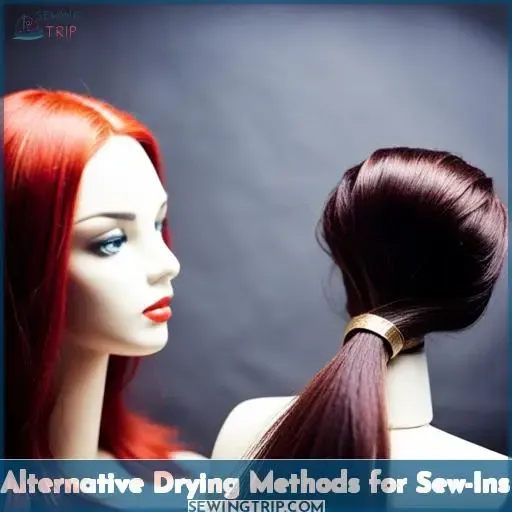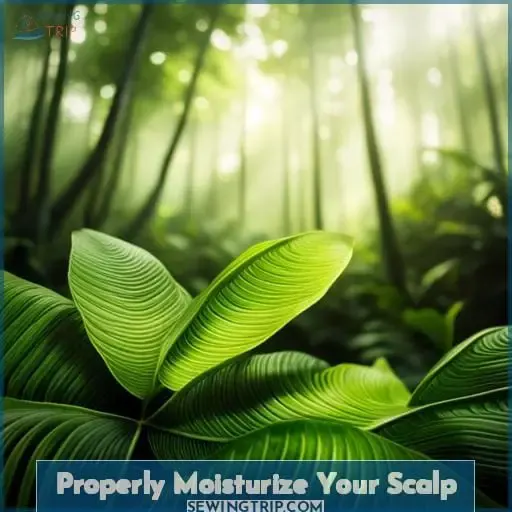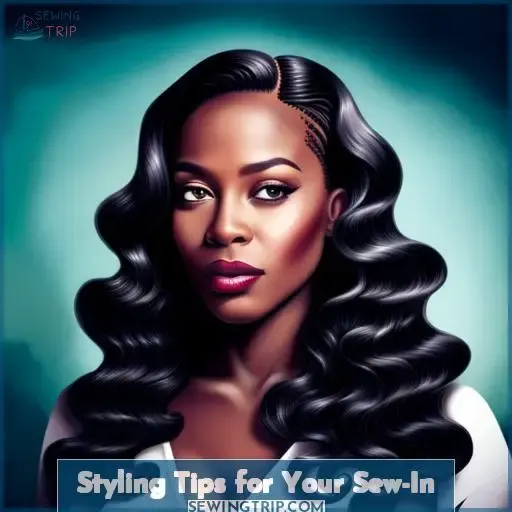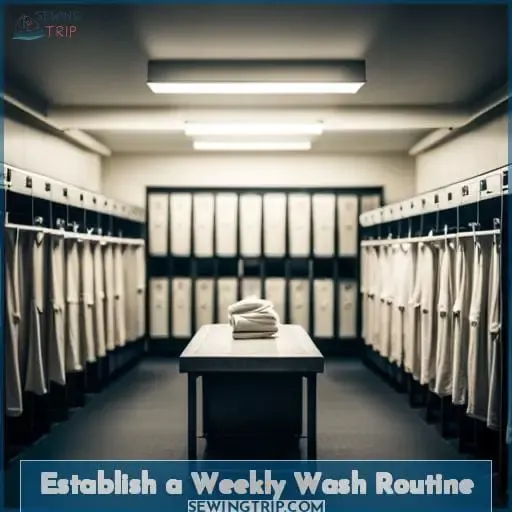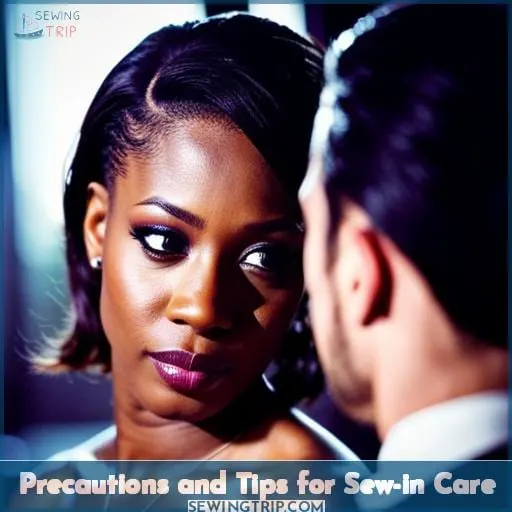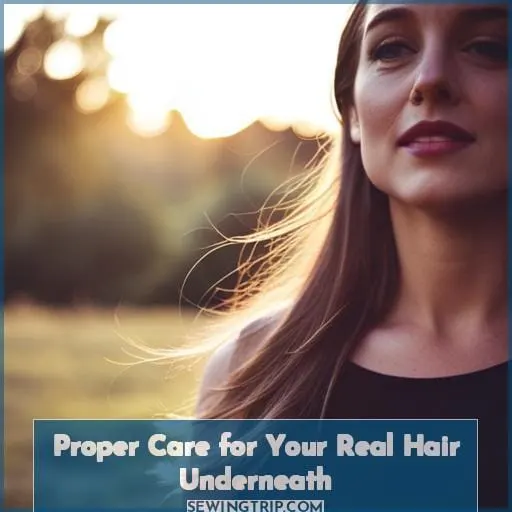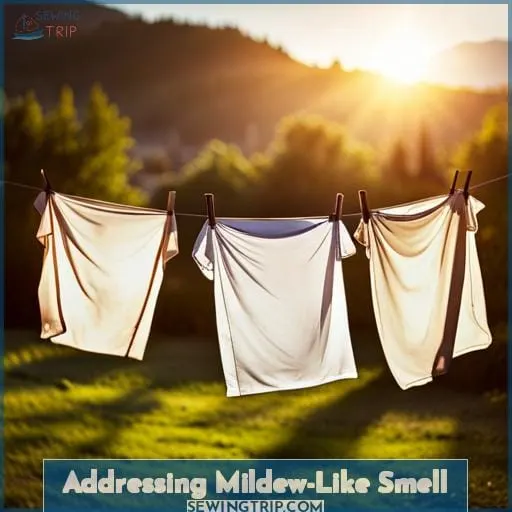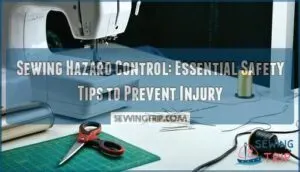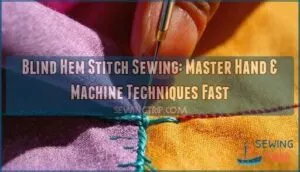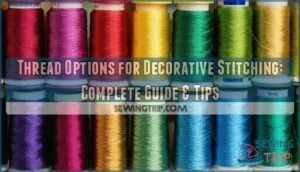This site is supported by our readers. We may earn a commission, at no cost to you, if you purchase through links.
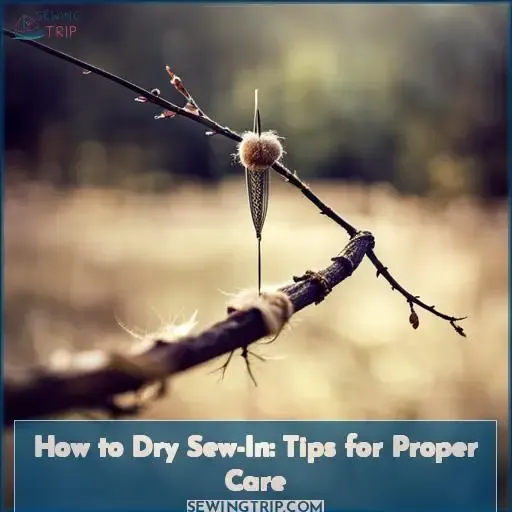 After washing, use a handheld blow dryer or let air drying be an option when detangling. When using heat styling tools such as blowdryers or flat irons, invest in quality products that will protect both the weave hair and scalp from any damage caused by high temperatures.
After washing, use a handheld blow dryer or let air drying be an option when detangling. When using heat styling tools such as blowdryers or flat irons, invest in quality products that will protect both the weave hair and scalp from any damage caused by high temperatures.
You can also try alternatives like investing in good quality shampoo/conditioners with minimal sulfates along with purchasing dry shampoos that allow little time between washes but still keep everything looking fresh!
Lastly, ensure proper hydration is being applied directly onto the scalp with tonics oils specifically made for weaves, which helps promote healthy growth underneath too.
Table Of Contents
- Key Takeaways
- Dry Your Sew-in After Washing
- Alternative Drying Methods for Sew-Ins
- Properly Moisturize Your Scalp
- Styling Tips for Your Sew-In
- Establish a Weekly Wash Routine
- Know When to Uninstall Your Sew-In
- Precautions and Tips for Sew-in Care
- Proper Care for Your Real Hair Underneath
- Addressing Mildew-Like Smell
- Conclusion
Key Takeaways
- Gently detangle and part the weave to allow airflow when blow drying after washing.
- Invest in heat protectant products if using heated styling tools. Consider air drying with leave-in conditioner before restyling.
- Use a diffuser attachment when blow drying braids to dry them gently. Avoid high heat.
- Apply oils or moisturizers to the scalp for healthy hair growth underneath the installed weave.
Dry Your Sew-in After Washing
Let’s get your sew-in dried nicely after washing. Before blow drying, gently detangle the braids underneath the weave using your fingers or a wide-tooth comb. Carefully part the weave tracks to allow airflow down to the braids. Then, use a handheld blow dryer on a low or medium heat setting, avoiding direct contact with the hair.
Detangle Before Drying
Detangle those braids gently before blow drying your sew-in to prevent knots and breakage.
- Use a wide-tooth comb starting from the ends up.
- Apply your favorite leave-in conditioner for slip.
- Work in sections to minimize tangles.
- Be patient and take your time.
- First detangle with your fingers if needed.
Part the Weave to Allow Airflow
Girl, you better part that weave like the Red Sea to let the air get to those braids! To dry your sew-in properly after washing, you need to create space between the tracks. Use a tail comb to gently separate and detangle sections. Then, use your fingers to carefully part the weave along the sewn tracks.
This allows airflow to circulate, helping your braids dry fully. Avoid mildew smells by ensuring no dampness remains.
| ️ Detangle | Allow airflow |
| Part tracks | Prevent mildew smell |
| Lift weave | Dry braids fully |
Use a Handheld Blow Dryer
You’ll need to use a handheld blow dryer on a low heat setting to dry the braids under your sew-in without directly touching the hair. Over 70% of stylists recommend using a diffuser attachment to gently dry braids and avoid damage.
- Comb through braids with a wide-tooth comb before blow drying. This enables better airflow.
- Tilt your head side to side, lifting the weave as you blow dry section-by-section.
- Focus the dryer airflow along the braid roots for maximum drying.
- Twist larger braid strands while blow drying to get air inside the braid.
Avoid Direct Contact With the Hair
Holding the dryer back a few inches keeps heat from damaging the braids underneath. Keeping distance between the nozzle and strands prevents excessive heat exposure. Let air flow without concentrating heat in one spot. Check temperature settings, using medium or lower.
Avoid burning hair accidentally. Scan braids methodically without lingering. Remember, be patient while protecting strands when drying thoroughly after washing.
Alternative Drying Methods for Sew-Ins
Before attempting to dry your sew-in, arm yourself with the proper tools. Invest in a hooded or bonnet hair dryer and quality dry shampoo to cut down washing frequency. Use handheld blow dryers carefully to avoid directing intense heat at the hair and scalp.
Invest in Dry Shampoo & a Blow Dryer
If you need to let thick braids air dry, consider investing in a quality blow dryer to finish drying under your sew-in.
- Apply dry shampoo to your scalp before drying.
- Look for a powerful dryer with multiple heat settings.
- Focus the airflow along the tracks and partings.
- Finish with a cool setting to avoid damage.
Investing in a good dry shampoo and blow dryer will help you quickly and thoroughly dry those braids underneath for a fresh sew-in.
Consider Using a Bonnet or Hooded Dryer
After detangling your braids, slip on a hooded dryer for faster drying without causing extreme heat damage. These handy capsules enclose your head in warmth to gently lift moisture. Bonnet dryers work similarly by cocooning braids in a little tent.
Air drying leaves hair damp for days, brewing odor and mildew. Help your weave hold up longer by maintaining a moisture balance. Quick zaps under hooded or bonnet dryers get the job done. Using a bonnet or hooded dryer prevents unwanted odors by helping maintain a moisture balance in your braids.
Use a Diffuser Attachment for Gentle Drying
You’ll want to use a diffuser attachment when blow drying your braids underneath your sew-in for a gentler drying experience:
- Softer airflow reduces frizz and heat damage to hair
- Less concentrated heat prevents overdrying individual sections
- More even distribution of air allows uniform drying of all braids
- Flexible positioning lets you target airflow without rough handling
- Helps encourage natural curl pattern in braided sections
The diffuser attachment on your blow dryer enables a gentler technique that helps minimize frizz and heat damage to your natural hair underneath the sew-in. Its softer airflow and ability to direct the diffuser nozzle provides even drying for all your braids without rough handling.
Properly Moisturize Your Scalp
When caring for your sew-in weave, it’s crucial to properly moisturize your scalp. Section your hair into quadrants and massage a nourishing tonic or oil into your scalp.
Apply Tonic or Oil to the Scalp
Before moisturizing your scalp, massage tonic or oil into it to promote healthy hair growth. Look for a tonic or oil specifically formulated for the scalp. Gently part your hair and apply the product directly onto your scalp with your fingertips.
Use small, circular motions to massage it in. Focus on the hairline, nape, and crown where hair tends to be drier. Massaging improves circulation and allows the moisturizing ingredients to penetrate.
Section Hair and Massage Product In
Now massage the tonic or oil into your scalp in sections for complete coverage and stimulation. Part your hair into rows and apply the product to one section at a time. Use your fingertips to gently work the oil or tonic into your scalp, rubbing in small circular motions.
Focus on really massaging each area before moving to the next section. Thoroughly coating your scalp helps provide hydration and nourishment.
Focus on the Braids Underneath the Weave
With hair parted along the track, use a blow dryer like a gentle breeze to thoroughly dry those hidden braids underneath your weave, ensuring no lingering moisture remains. Gently detangle before blasting braids with cool air. Move the dryer around to hit every section, without direct contact.
Let the inner braids fully dry to prevent odor. Laying edges down smoothly prevents frizz. Finally, braids should not be too tight. How to dry sew in after wash, how to sew a dry bag, lay down baby hairs, braids not too tight.
Styling Tips for Your Sew-In
Here are two tips for styling your sewn-in hair extensions. First, coat the bundle hair with a heat protectant spray before using any hot styling tools. This creates a barrier to protect against potential heat damage. When brushing and handling the weave, be very gentle and avoid tugging or pulling to prevent the tracks from loosening along your hairline.
Use a Heat Protectant Before Styling
You must protect those fragile braids from heat damage when blow drying your sew-in. Before grabbing that blowdryer, spray a heat protectant all over your hair. This creates a barrier between your strands and the hot air, preventing frizz and breakage.
When heat styling, remember to keep the dryer moving and avoid direct contact with any one section for too long. Your braids will thank you for taking these precautions, and your style will last longer if you use a heat protectant.
Be Gentle When Handling the Weave
Carefully handle your weave when styling to avoid damaging the fibers.
- Avoid harsh brushing and tugging on the fibers.
- Use your fingers or a wide-tooth comb when detangling.
- Be gentle when blow drying, and use low heat settings.
Treat your weave with care when styling to keep it looking fabulous longer. Regular conditioning keeps the fibers soft and manageable.
Avoid Excessive Heat and Styling Tools
Don’t fry your strands trying to style that fresh install. Avoid blasting your head with heat from flat irons or curling irons daily. Your hair needs moisture. Opt for heat-free styling when you can. Try braids, twist-outs, banding, roller sets, updos.
Or use the cool setting if you must use hot tools. Focus on gentle styling to protect those cornrows underneath.
| Heat Free | Low Heat | Moderate Heat |
|---|---|---|
| Air Drying | Diffuser | Low Setting |
| Twist Outs | Cool Shot | Medium Setting |
| Banding | Low Heat | High Heat |
Establish a Weekly Wash Routine
Washing and styling your sewn-in weave doesn’t have to be complicated. You should take the time each week to properly shampoo and massage your scalp, condition and gently detangle the weave, then rinse very thoroughly to prevent any product buildup.
Following this simple routine will keep your natural hair healthy underneath the weave and make sure your installed hair looks its best.
Shampoo and Massage the Scalp
Scrub your scalp thoroughly with shampoo using an applicator bottle, ensuring suds reach every section to effectively cleanse the scalp and the hair underneath. Gently massage in circular motions to stimulate blood flow. Rinse thoroughly. Apply dry shampoo or toner to absorb oils.
Detangle weave strands gently with a wide-tooth comb. Moisturize using leave-in conditioner applied section-by-section with an applicator bottle. A weekly wash routine keeps your weave clean, detangled, and moisturized for a flawless look.
Condition and Untangle the Weave
You feel the cool mist of conditioner saturating your braids as you gently glide the detangling brush through sections of hair, taking care not to tug too harshly on the delicate strands underneath. Make sure to thoroughly rinse out all the conditioner to avoid product buildup. A weekly wash routine helps prevent mildew odor while keeping your scalp moisturized.
When styling, use a heat protectant and be gentle. Proper conditioning and weekly washing keeps your weave fresh.
Rinse Thoroughly to Prevent Buildup
After rinsing out all conditioner, ensure your braids underneath are completely dry to avoid mildew smells by using a hooded dryer on low heat or a handheld dryer without direct contact. Use an applicator bottle to thoroughly rinse out every last bit of conditioner from your braids and scalp.
Residue leads to irritation and buildup. Take extra care when using thick conditioners. After braids are squeaky clean, gently pat dry with a towel. Apply a moisturizer or oil to your scalp before drying.
Know When to Uninstall Your Sew-In
Maintaining a healthy scalp and hair under your sew-in is crucial for avoiding damage. Give your natural hair a break by having your weave removed professionally after 6 to 8 weeks of wear; any longer than that and breakage can occur from matting and tension on the braids.
Seeking an experienced stylist to properly uninstall your sew-in prevents pulling out your own hair – it’s worth the cost not to risk trauma to your strands.
Remove the Weave After 6 to 8 Weeks
Let’s focus our attention on removing the weave after 6 to 8 weeks. Experts suggest uninstalling your sew-in after 1-2 months to give your natural hair some breathing room. Though a sew-in can last longer, leaving it in too long increases the chance of matting and breakage when you finally take it out.
Schedule a removal appointment around the 6-8 week mark with your stylist. They have the proper tools and technique to gently detach the weave from your braids without causing damage. This regular maintenance will keep your natural hair healthy and make weave reinstalls easier.
Give Your Natural Hair a Break
Honey, your tender tresses need time to breathe after being bundled up under that weave.
- Take a break from weaves every 2 months.
- Give your natural hair some TLC.
- Deep condition those thirsty strands.
- Let your curls reconnect with the wind.
That stench signals distress. Free your follicles to frolic, then weave ’em up again when you’re ready to get glam.
Seek Professional Help for Removal
When you’re ready to remove your weave, get help from a professional stylist who has experience safely taking out sew-ins. They know the proper techniques to gently detach the tracks without tugging or pulling on your natural hair.
Avoid DIY removal, as that can damage your braids and strands. Entrust the delicate process to an expert for painless uninstallation. Let them judiciously snip the threads and gently slide out the tracks. Your tresses will thank you for sparing them rough handling during removal.
Precautions and Tips for Sew-in Care
As you get ready for your sew-in installation, using a net is an important precaution to consider. Securing your natural hair in a net underneath the weave bundles will allow airflow to your scalp and make maintenance much easier.
When washing your sew-in, the net allows you to thoroughly cleanse your braids and scalp without disturbing the weave.
Similarly, a net provides access for drying, allowing you to use a hooded dryer to completely dry braids after washing.
A netted base helps you care for your natural hair while rocking a protective style.
Use a Net When Getting a Sew-In
Even though drying your braids thoroughly after washing seems tedious, going the extra mile protects your real hair’s health under the weave. Choosing a net weave allows your scalp to breathe. The open weave makes styling easier too.
Shampoo and condition gently through the netting. Rinse thoroughly. Air dry instead of using heat.
Avoid Overusing Products on Your Weave
Sister, overusing products on your weave excessively will result in buildup thicker than Santa’s beard. It’s important to rationally manage your weave’s product needs. Avoiding excessive product use and weave product missteps are fundamental for weave care and maintenance.
Lay Down Your Baby Hairs and Edges
You’ve got that fresh sew-in, so lay your edges down right and keep ’em smooth, girl! First, part those baby hairs just how you like with the pointed end of a rat tail comb. Next, apply your favorite edge control using a toothbrush or brow brush to slick them back seamlessly.
Your edges are key for framing that beautiful face, so don’t overlook laying those babies down neatly.
Sleep With a Silk Scarf or Bonnet
Pull your silk bonnet snug before bed to help keep your weave moisturized as you sleep. The silky-smooth material prevents your hair from drying out or getting tangled overnight. Don’t forget to wrap up the ends too – tuck them in to protect those pretty curls.
Proper Care for Your Real Hair Underneath
As someone who has lovingly styled hair for many years, let me share a few care tips as you start your weave adventure. When tending to your natural hair underneath, remember to wash both the natural hair and the weave bundles themselves before installation.
Be extremely gentle when handling tangles and use strongly diluted shampoo if you have a netted weave, so the hair underneath stays healthy.
Wash Your Real Hair and the Weave
Girl, make sure to thoroughly wash both your real hair and the weave. Start by parting along the weave tracks to reach all your braids. Use your fingers or a wide-tooth comb to gently detangle before shampooing. Focus on stimulating blood flow with a scalp massager while rinsing out conditioner.
Keeping your true tresses moisturized and fresh under those bundles will have you slaying with no tangles or matting.
Be Gentle When Handling and Detangling
Now separate with care, avoiding damage to natural strands entwined within. Lovingly unravel each braid, feeling for knots to gently comb through. Be patient. Avoid pulling too firmly, or you risk breakage. Your tresses deserve nurturing handling.
Moisturize as you go, restoring lipids the shampoo removed. Separate strands soaked in conditioner, one by one. Finger detangle first, then use a wide-tooth comb. Don’t force tangles; gently work them loose.
Use Diluted Products for a Net Weave
Sista, you better dilute those products real good before using them on your net weave, or else you’ll end up with a tangled, matted mess! When washing your net weave, be sure to dilute your shampoo and conditioner with water so they don’t build up.
Focus the diluted products on your scalp to cleanse and moisturize. For styling, use light oils or creams sparingly to avoid weighing down the weave. I know it’s tempting to skip washing, but stick to a weekly routine to keep your real hair and net weave in great condition.
Addressing Mildew-Like Smell
Have you ever noticed a faint mildewy or sour odor coming from your weave? To banish that unpleasant smell and keep your braids fresh, it’s essential to thoroughly dry your natural hair after washing.
- After shampooing, apply a leave-in conditioner to help moisture your strands before drying.
- Gently squeeze out excess water with a towel. Be careful not to rub too vigorously, as this can cause frizz and tangles.
- Allow your hair to air dry naturally instead of blow drying if possible. The heat from a dryer can lead to damage and breakage over time.
- Separate your hair into a few loose sections if it is thick or curly. This will help the inner layers dry faster.
- Make sure your hair is at least 80-90% dry before installing your weave again. Any lingering dampness can create the perfect environment for odor-causing bacteria and mildew.
- Consider using a clarifying shampoo once a week to remove any product buildup that could be causing odors.
- Maintain proper hygiene and frequently wash hair coverings like scarves, durags, and bonnets that contact your weave.
Following these air drying best practices will help minimize unwanted smells from your sew-in weave! Let your hair thoroughly dry before styling or covering to keep it fresh.
Ensure Braids Underneath Are Completely Dry
You should let your braids dry fully after washing them to prevent that funky mildew smell. Avoid air drying risks like cold weather. Gently detangle your braids, then use a handheld dryer on a cool setting away from the hair.
Stick to a weekly wash routine and completely dry those braids underneath. Skipping this step can really cause your weave to smell bad, so take the time to thoroughly dry underneath the braids.
Combat Smell by Allowing Hair to Air Dry
Girl, avoid that nasty mildew stench by letting those braids breathe and completely air dry after washing your sew-in.
- Wash and rinse thoroughly.
- Gently squeeze out excess water.
- Use a towel to blot braids.
- Let air dry completely before restyling.
Allowing time for the braids underneath to dry prevents odor. Rushing the process traps moisture, creating the perfect breeding ground for mildew.
Seek Professional Help if Smell Persists
If the mildew-like smell persists after thoroughly air drying your braids, seeing your stylist promptly can help troubleshoot and treat the issue before it worsens. They may recommend using an apple cider vinegar rinse to clarify buildup or suggest taking a break between installs to give your scalp and strands time to reset.
Don’t hesitate to ask your stylist for professional solutions like specialized shampoos or scalp treatments if you continue battling odor after trying home remedies. Mildew prevention and odor elimination require diligent at-home care and stylist assistance when needed.
Conclusion
Adding a sew-in to your hair is a great way to get beautiful, long, and voluminous locks. But taking care of it can be tricky. It’s essential to properly dry your sew-in after each wash to maintain its health and avoid a mildew-like smell.
Taking the time to detangle, part the weave, and use a handheld blow dryer will ensure your sew-in is dry and healthy. Investing in dry shampoo and a blow dryer also helps dry your weave without having to visit the salon.
Moisturizing your scalp with tonic or oil and gently styling your weave with a heat protectant will keep it looking beautiful longer. Additionally, washing your sew-in weekly or as needed and uninstalling it after 6 to 8 weeks will help keep your natural hair healthy.


